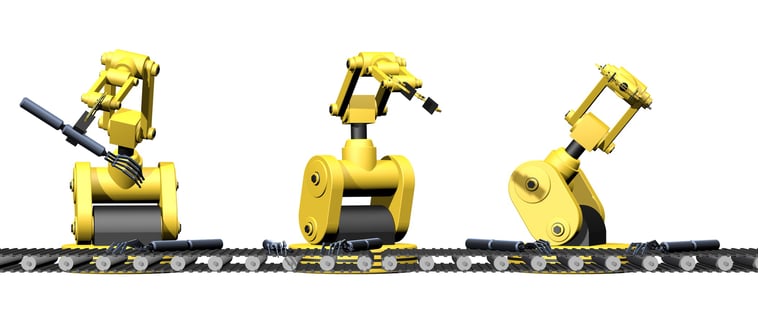
At Marlin Steel, everyone is dedicated to finding ways to increase efficiency and get more work done with fewer resources. This is part of the reason why Marlin Steel invests so much effort in training employees in new skills and staying current with new techniques in the manufacturing industry.
A recent discovery made by researchers at the Chalmers University of Technology featured in a manufacturing.net article has the potential to greatly improve the energy efficiency of robotic manufacturing.
How much can the process discovered by the Chalmers University of Technology researchers improve the energy efficiency of a manufacturing robot? According to the article, the researchers’ “have developed an optimization algorithm to smooth out movements and reduce energy consumption in industrial robots by up to 40 percent.”
If applied to manufacturing robots throughout the industry, this innovation could significantly reduce the power consumption of the industry as a whole.
How Does the Algorithm Work?
So, how is it that this new optimization algor ithm reduces energy consumption for manufacturing robots?
ithm reduces energy consumption for manufacturing robots?
As pointed out in the manufacturing.net article, “the key is to reduce both acceleration and deceleration, with a more relaxed pace allowing the robot to coordinate more efficiently with the other around it.”
Basically, most manufacturing robots run at full speed most of the time when they’re manufacturing a part. It takes extra energy for a robot to run at full steam, and the robot will still consume energy when sitting idle waiting for other robots to catch up.
For example, say that one robot runs a process that only takes 12 seconds to finish, while another robot is running a related process that takes 18 seconds. The first robot, when done, has to wait for the second robot to finish before it can move on to the next part, resulting in six seconds of wasted time for that robot.
One of the things the researchers’ new algorithm does is slow down the faster robot to keep pace with the slower processes. This allows the robot to consume less energy while in operation, and reduces the amount of power burned for idle time without increasing the time it takes to complete a given part.
According to the article, another thing that the new algorithm does is “coordinate several robots working in the same area, calculating which ones are likely to collide and adjusting accordingly. The optimizer logs the movements of each robot during an operations cycle, and feeds thin formation through the optimizer and back into the robots as new control instructions.”
This helps to avoid collision mishaps that can occur during complicated manufacturing processes that have multiple manufacturing robots working in a small area. Such mishaps not only damage the parts being made, but risk damage to the robots themselves, both of which can lead to significant production delays.
What are the Results?
As stated by the article, “initial test results have shown a 15 to 40 percent energy reduction, said Kristofer Bengtsson, head of the implementation strategy.”
Why is the strike zone for energy savings with this new optimization algorithm so large?
One reason might be that the actual benefit for any individual machine is dependent on the amount of energy the machine consumes and how much time the machine spends idle between processes as it waits for other units to catch up.
This is probably why Mr. Bengtsson cautions that “further testing in real-world industries is required in order to more accurately estimate energy savings” in the article.
However, if this new optimization tool finishes its development and proves reliable as a way to consistently reduce energy consumption for robotic manufacturing, it would have the potential to greatly improve the American manufacturing industry’s energy efficiency.



.gif)


